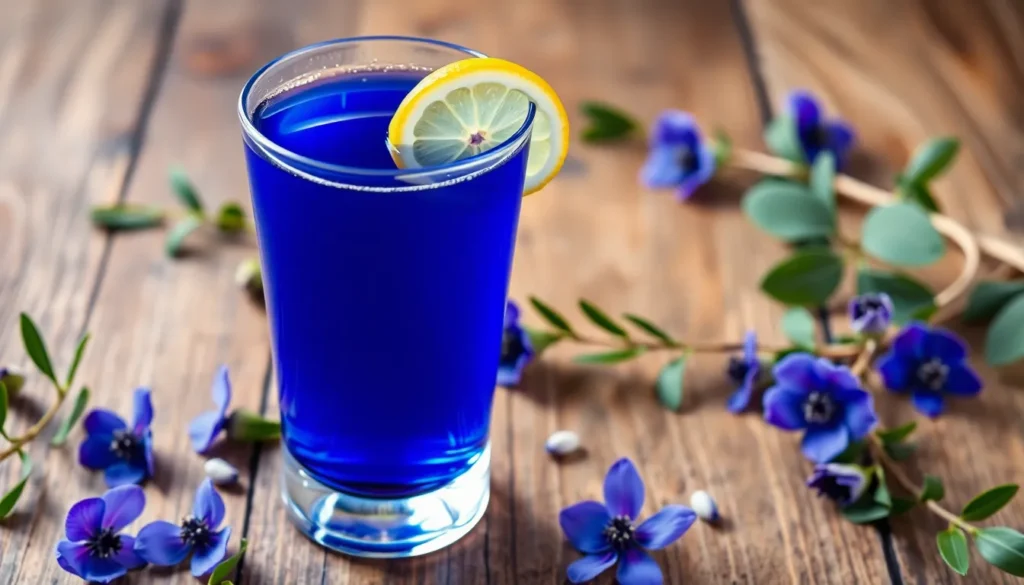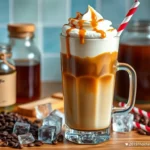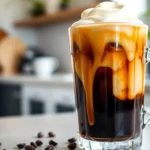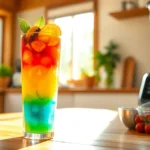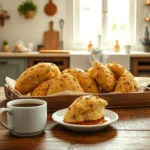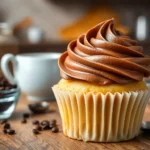We’ve all seen those stunning blue teas flooding social media feeds but wondered what butterfly pea tea actually tastes like beyond its Instagram-worthy appearance. This vibrant herbal tea delivers a surprisingly mild and earthy flavor that’s nothing like what you’d expect from such a bold-looking beverage.
Butterfly pea tea offers a subtle grassy taste with delicate floral notes that won’t overwhelm your palate. Many describe it as having an almost neutral flavor profile similar to green tea but gentler and less astringent. The real magic happens when you add citrus – watch the brilliant blue transform into gorgeous purple and pink hues while adding a bright tartness that perfectly complements the tea’s natural earthiness.
We’re excited to share everything you need to know about this fascinating color-changing tea that’s captured hearts worldwide. From its unique taste profile to the best ways to enhance its flavor you’ll discover why butterfly pea tea has become our go-to choice for both wellness and wow factor.
What Does Butterfly Pea Tea Taste Like
We often describe butterfly pea tea’s flavor profile as surprisingly subtle and delicate. The tea offers a mild earthy taste that distinguishes itself from stronger herbal varieties. Most people notice gentle grassy undertones when they first sip this vibrant blue beverage.
The floral notes present themselves softly without overwhelming the palate. We find the overall taste much milder than traditional green tea varieties. The absence of caffeine contributes to its smooth and calming drinking experience.
Fresh butterfly pea flowers create a tea with clean vegetal qualities. We detect hints of cucumber and green bean flavors that add complexity to each cup. The natural sweetness remains very subtle and never becomes cloying.
Many tea enthusiasts compare the taste to a light chamomile or white tea experience. We notice the flavor becomes more pronounced when we brew the tea stronger or longer. The earthy base remains consistent regardless of brewing strength.
The tea’s neutral flavor profile makes it exceptionally versatile for flavor additions. We recommend starting with plain butterfly pea tea to appreciate its natural characteristics. Understanding the base flavor helps us make better decisions when adding complementary ingredients.
Temperature affects the taste intensity significantly. We find hot brewing brings out more of the earthy and grassy notes. Cold brewing tends to produce a smoother and more refreshing flavor profile that many prefer during warmer weather.
The Unique Flavor Profile of Butterfly Pea Tea
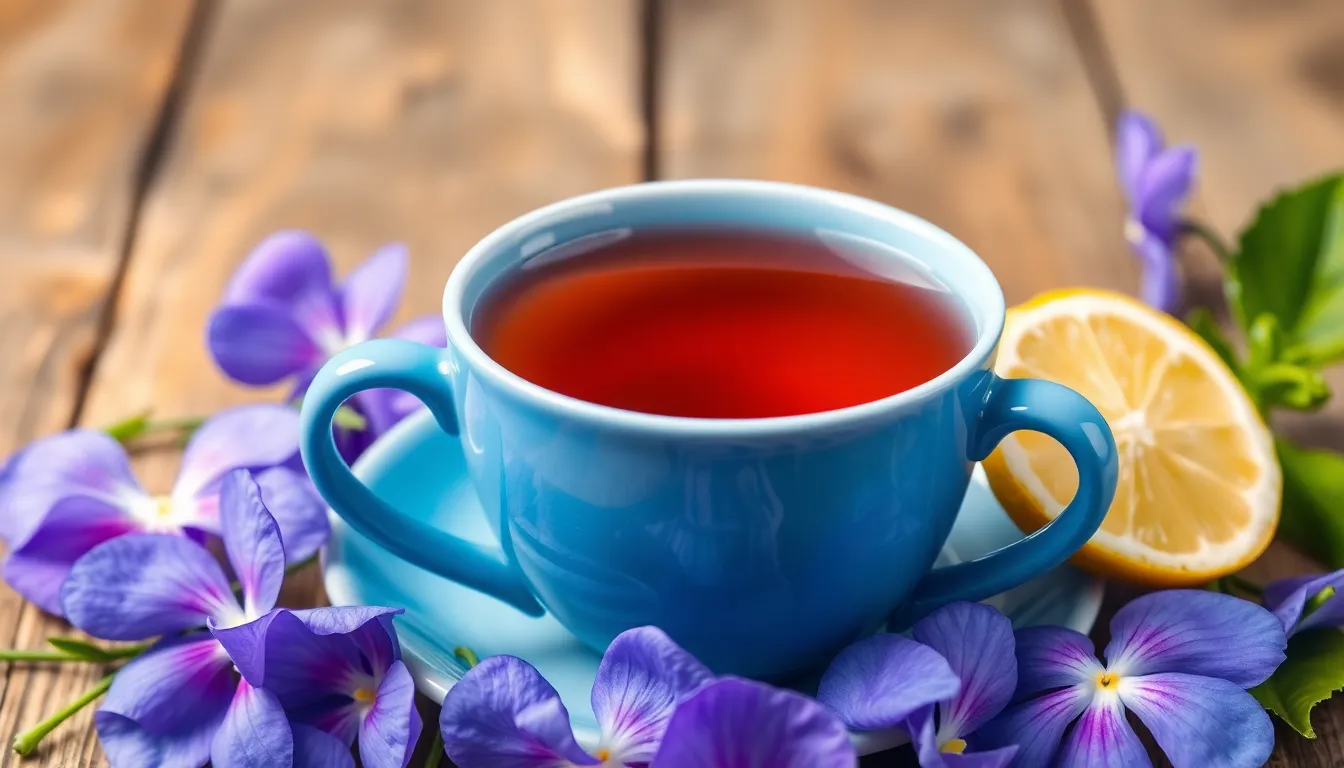
We’ve established that butterfly pea tea offers a remarkably gentle drinking experience. Now let’s explore the exact flavor characteristics that make this vibrant blue beverage so distinctive from other herbal teas.
Earthy and Floral Notes
The most prominent characteristics of butterfly pea tea center around its earthy and woody foundation with slight floral undertones. These subtle aromas create a delicate balance that never overwhelms the palate. We find the floral notes particularly gentle, making them perfect for blending with complementary flavors like lemon or honey. The woody undertones provide depth without the astringency found in many traditional teas. Fresh butterfly pea flowers contribute clean vegetal qualities that add complexity to each sip.
Mild and Subtle Taste
Butterfly pea flowers deliver an exceptionally light taste profile similar to mild green tea with slightly vegetal characteristics. When we brew the tea alone, it offers an earthy flavor reminiscent of green tea but significantly gentler. The flowers themselves possess such a delicate taste that when added to other tea blends, their flavor becomes almost entirely unnoticeable. This mildness makes butterfly pea tea accessible to those who typically find herbal teas too strong or bitter. The subtle nature allows the tea’s visual appeal to take center stage while providing a pleasant drinking experience.
Comparison to Other Herbal Teas
Butterfly pea tea stands apart from other herbal teas primarily due to its unique color changing ability and caffeine free nature. Adding lemon juice or other acidic ingredients transforms the tea’s color from blue to purple, creating both visual appeal and enhanced flavor. Unlike many herbal teas that can be overpowering, butterfly pea tea’s mild profile makes it suitable for consumption at any time of day. The absence of caffeine contributes to a smooth and calming drinking experience that differs significantly from caffeinated alternatives. We appreciate how its neutral flavor base makes it incredibly versatile for both hot and cold preparations, smoothies, desserts, and specialty beverages.
Ingredients for Basic Butterfly Pea Tea
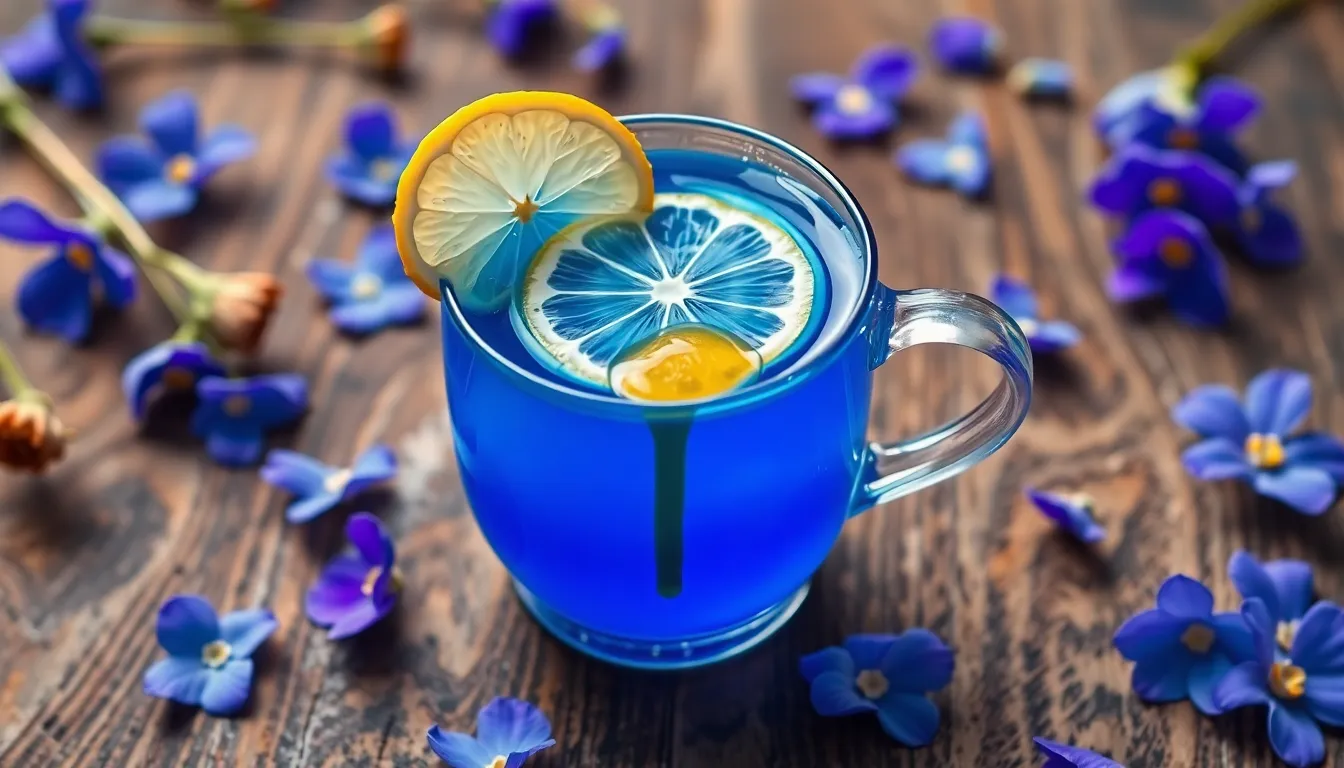
We need only a few simple ingredients to create this beautiful blue tea with its delicate earthy and woody flavor profile. The minimal ingredient list makes butterfly pea tea an accessible drink for anyone wanting to experience its mild floral undertones and color-changing properties.
Essential Ingredients
- 1 tablespoon dried butterfly pea flowers (Clitoria ternatea)
- 1 cup filtered water (8 ounces)
- Optional: 1 teaspoon honey for subtle sweetness
- Optional: 1-2 teaspoons fresh lemon juice for color transformation
Quality Considerations
The butterfly pea flowers serve as our primary ingredient and determine the tea’s earthy and woody notes. We recommend sourcing high-quality dried flowers that retain their deep blue color and aromatic properties. Fresh filtered water enhances the tea’s naturally mild and subtly aromatic character without adding unwanted mineral flavors.
Flavor Enhancement Options
Honey complements the tea’s floral and mildly sweet characteristics without overpowering its delicate nature. Lemon juice transforms both the flavor and appearance, adding tartness while changing the blue liquid to purple or pink. These optional ingredients allow us to customize the tea’s taste profile while maintaining its light and delicate foundation similar to green tea.
The simplicity of these ingredients showcases butterfly pea tea’s natural flavor complexity, from its earthy base to its gentle floral finish with notes that some describe as reminiscent of honey and hay.
Equipment Needed
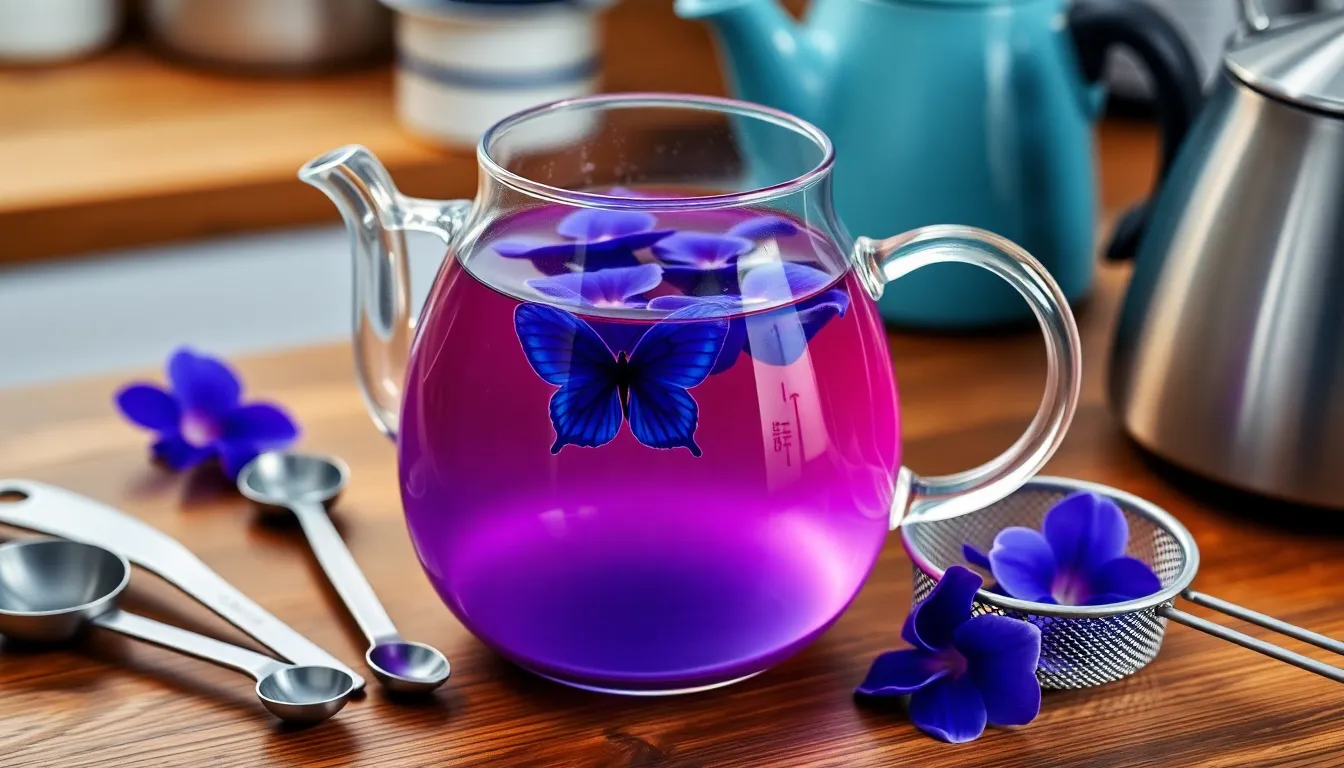
Brewing butterfly pea tea requires minimal equipment that most home kitchens already contain. We recommend gathering these essential tools before beginning your tea preparation to ensure a smooth brewing process.
Essential Equipment:
- Teapot or heat-resistant glass pitcher – Glass vessels showcase the tea’s stunning blue color transformation
- Fine mesh strainer or tea infuser – Prevents flower particles from entering your finished tea
- Measuring spoons – Ensures accurate proportions for consistent flavor
- Kettle or saucepan – Heats water to the proper temperature for optimal extraction
- Serving cups or mugs – Choose clear glass to appreciate the color-changing properties
Optional but Helpful:
- Digital thermometer – Monitors water temperature for precise brewing control
- Timer – Tracks steeping time to prevent over-extraction
- Citrus juicer – Extracts fresh lemon juice for color transformation
- Honey dipper – Distributes sweetener evenly throughout the tea
Glass equipment works particularly well for butterfly pea tea because it allows you to witness the dramatic color changes when acidic ingredients are added. The transformation from deep blue to vibrant purple creates a visual spectacle that enhances the overall tea experience.
We suggest avoiding metal strainers when possible as they can sometimes affect the tea’s delicate flavor profile. Stainless steel remains acceptable but fine mesh plastic or bamboo strainers preserve the tea’s subtle earthiness and floral undertones more effectively.
Most standard kitchen equipment suffices for preparing this caffeine-free herbal tea. The simplicity of the brewing process means you can enjoy butterfly pea tea without investing in specialized tools or complicated preparation methods.
Instructions for Brewing Perfect Butterfly Pea Tea
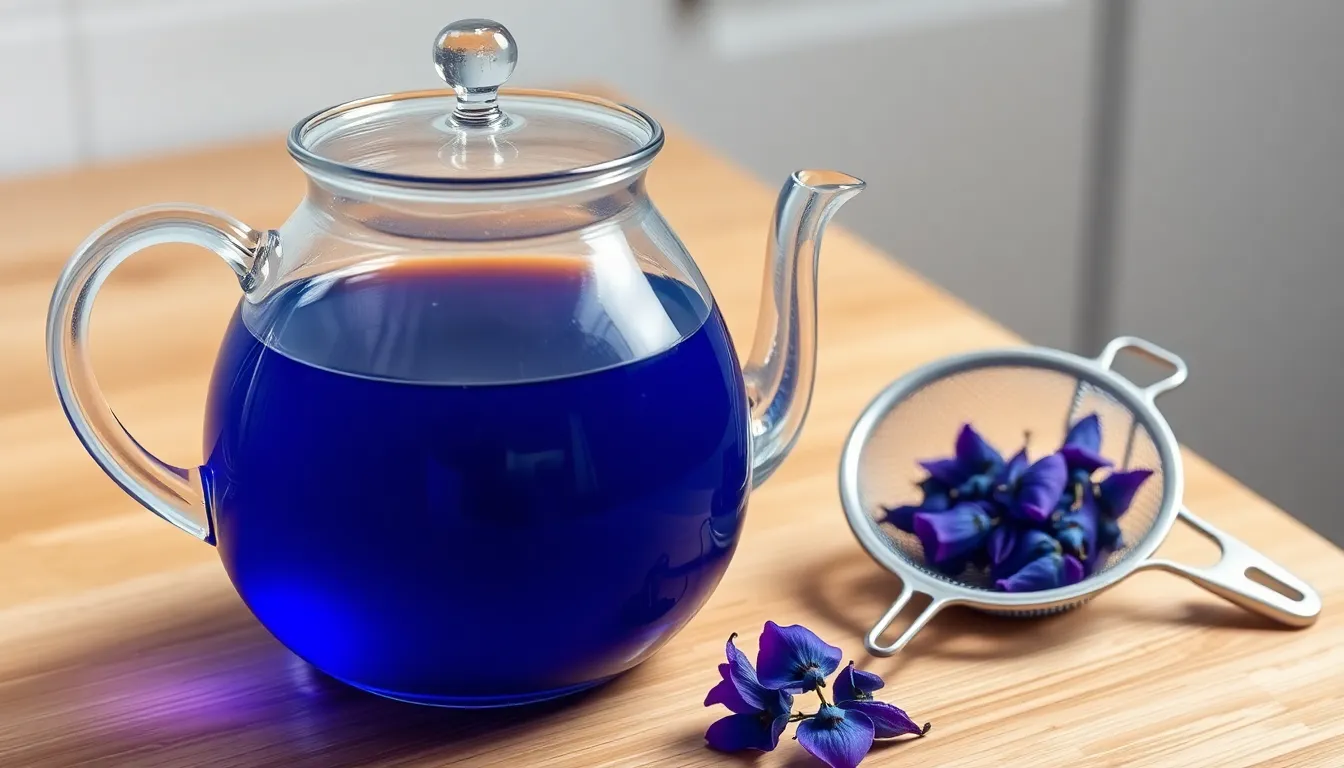
Creating the perfect cup of butterfly pea tea requires attention to temperature and timing to preserve its delicate flavor profile. Our step-by-step process ensures you extract the optimal color and taste from these beautiful blue flowers.
Prep
We recommend using high-quality dried butterfly pea flowers for the most vibrant color and best flavor extraction. Fresh flowers work wonderfully when available but dried petals maintain their potency and are more accessible year-round.
Select a suitable teapot or heat-resistant glass pitcher that allows you to observe the beautiful blue color development. Clean your brewing vessel thoroughly to avoid any residual flavors that might interfere with the tea’s subtle taste profile.
Measure approximately 1-2 teaspoons of dried butterfly pea flowers per 8 ounces of water. Having your ingredients ready before heating water ensures optimal brewing conditions.
Steep
Heat filtered water to almost boiling point at around 208°F or 97°C for the best extraction without destroying delicate compounds. Boiling water can make the tea slightly more bitter and reduce its floral notes.
Pour the hot water over the butterfly pea flowers and allow them to steep for 5 to 10 minutes. The longer steeping time enhances the vibrant blue color without creating bitterness like traditional teas.
Watch as the water transforms into a stunning deep blue hue during the steeping process. The color intensity indicates proper extraction of the beneficial anthocyanins that give butterfly pea tea its characteristic appearance.
Strain and Serve
Remove the flowers using a fine mesh strainer or by lifting out your tea infuser to prevent over-extraction. Press the flowers gently against the strainer to extract any remaining liquid without breaking them apart.
Pour the strained tea into clear serving cups to showcase its beautiful blue color. The transparency of the serving vessel enhances the visual appeal and allows you to appreciate the tea’s natural beauty.
Serve immediately while hot or allow it to cool for a refreshing iced version. Both preparations maintain the tea’s earthy and woody flavor profile with subtle floral undertones that make butterfly pea tea naturally caffeine-free and perfect for any time of day.
Flavor Variations and Enhancements
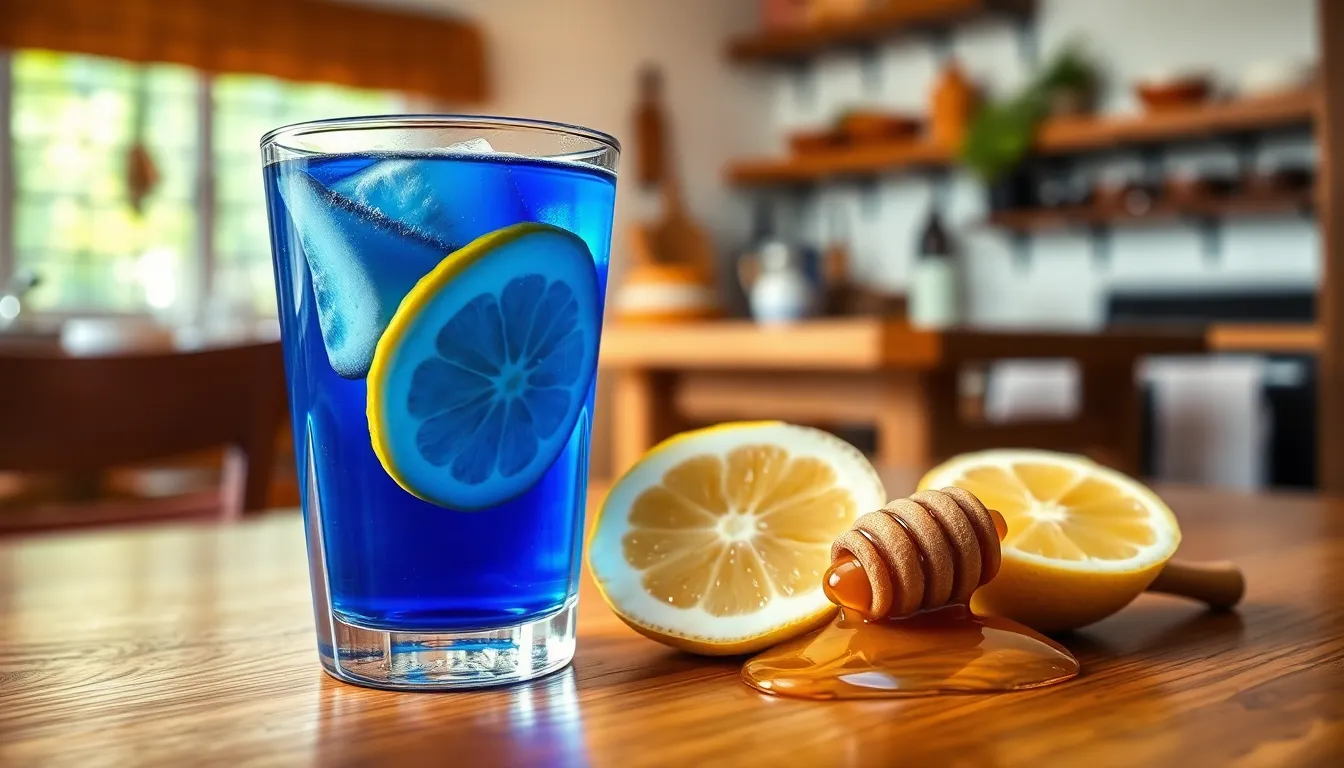
While butterfly pea tea delivers a naturally mild and earthy taste on its own, we can enhance its flavor profile through various additions and combinations. These modifications not only improve the taste but also create stunning visual effects that make this tea a true conversation starter.
Adding Lemon for Color Change
The magic of butterfly pea tea truly shines when we add lemon juice or other citrus fruits. The tea’s pH-sensitive properties cause an instant color transformation from deep blue to vibrant purple or even pink, depending on the amount of acid we introduce. This dramatic visual change occurs because the anthocyanins in the butterfly pea flowers react to acidic conditions.
We recommend starting with just a few drops of fresh lemon juice and gradually adding more to achieve our desired color intensity. The citrus addition doesn’t just create a spectacular show—it also enhances the tea’s flavor with bright, tart notes that complement the natural earthiness. This combination makes butterfly pea tea particularly popular in cocktails, mocktails, and themed beverages where visual appeal matters as much as taste.
Sweetening Options
Butterfly pea tea’s delicate flavor profile pairs beautifully with various natural sweeteners. We’ve found that the key to successful sweetening lies in choosing options that enhance rather than overpower the tea’s subtle characteristics.
| Sweetener | Flavor Profile | Best Use |
|---|---|---|
| Honey | Mild, floral sweetness | Hot tea preparations |
| Agave Nectar | Neutral, smooth sweetness | Cold beverages and iced tea |
| Simple Syrup | Straightforward sweetness | Both hot and cold applications |
Honey provides a mild, floral sweetness that harmonizes perfectly with the tea’s natural undertones. Agave nectar offers a neutral, smooth sweetness that won’t compete with the tea’s delicate flavor, making it ideal for cold preparations. Simple syrup delivers straightforward sweetness without altering the tea’s flavor profiles, giving us complete control over the taste experience.
Blending with Other Herbs
We can create complex and aromatic butterfly pea tea blends by incorporating complementary herbs. These combinations work exceptionally well because the tea’s neutral base allows other flavors to shine while maintaining its signature color properties.
Lemongrass adds bright, citrusy notes with a subtle grassy aroma that enhances the tea’s natural vegetal qualities. Fresh mint brings cooling properties and refreshing undertones that make the blend particularly enjoyable as an iced beverage. Ginger introduces warming spice and digestive benefits, creating a more robust flavor profile while adding aromatic complexity.
These herbal combinations can be enjoyed both hot and cold, making them suitable for various occasions throughout the day. We recommend experimenting with different ratios to find our preferred balance, starting with smaller amounts of additional herbs to avoid overwhelming the butterfly pea tea’s delicate foundation.
Hot vs Cold Butterfly Pea Tea Taste Differences
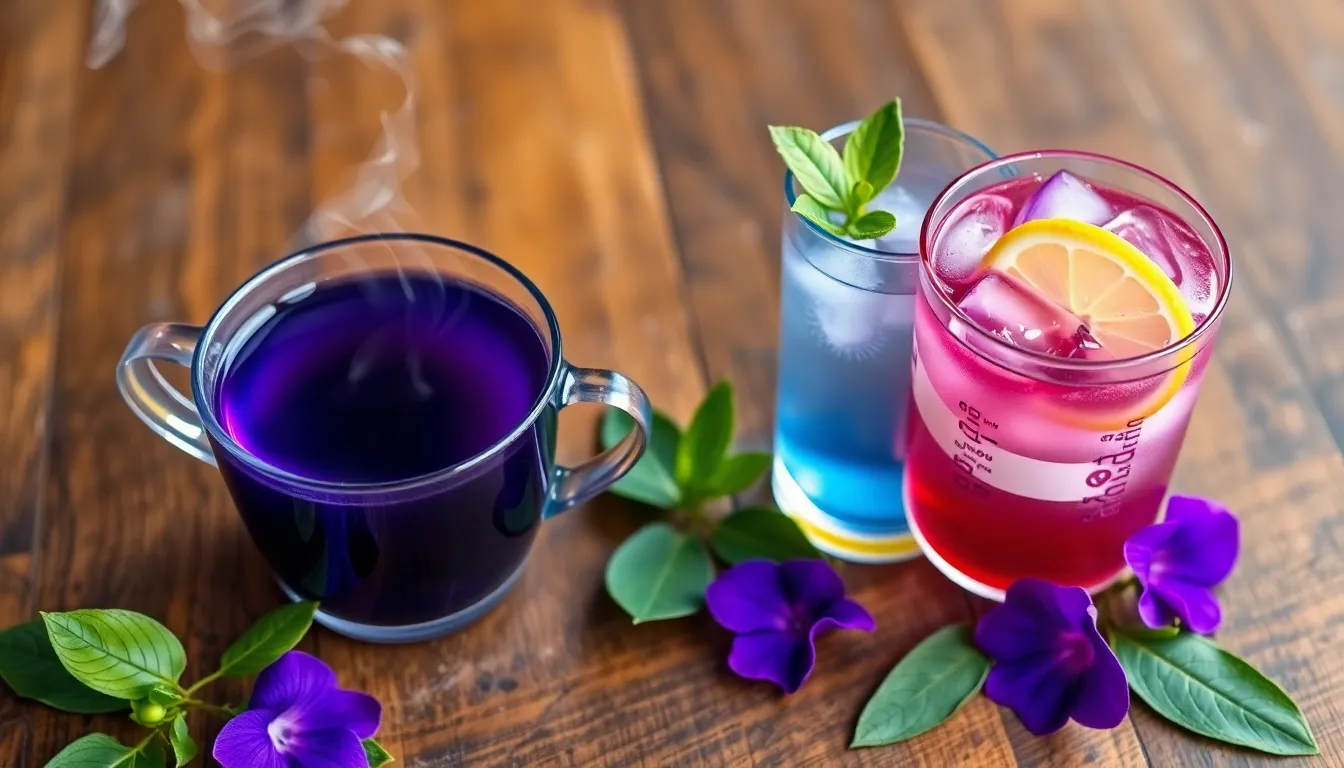
We find that butterfly pea tea maintains its consistent flavor profile whether served hot or cold. The tea’s subtle earthy taste and mildly floral notes remain unchanged across both temperature preparations. Our experience shows that temperature does not significantly alter the fundamental taste characteristics of this gentle herbal brew.
Hot butterfly pea tea delivers a more pronounced earthy quality that becomes slightly more noticeable when the flowers steep in heated water. The warmth tends to enhance the vegetal undertones while maintaining the tea’s naturally mild and delicate character. We observe that the hot preparation creates a comforting drinking experience that emphasizes the tea’s chamomile-like floral essence.
Cold butterfly pea tea offers the same gentle flavor profile with a refreshing twist. The cooler temperature provides a smoother drinking experience while preserving all the original taste characteristics. We notice that iced preparations tend to feel lighter on the palate without diminishing the tea’s signature earthy and slightly sweet qualities.
Temperature changes do affect the visual presentation of butterfly pea tea in remarkable ways. Hot preparations may display deeper blue hues initially while cold versions can appear more vibrant. We recommend observing how the color intensity varies with temperature while the taste remains beautifully consistent.
| Temperature | Taste Impact | Visual Changes | Best Uses |
|---|---|---|---|
| Hot (208°F) | Enhanced earthy notes | Deeper blue color | Morning ritual, relaxation |
| Cold | Smoother profile | Vibrant blue appearance | Refreshing drinks, summer beverages |
Both hot and cold preparations respond identically to pH changes when citrus additions transform the color from blue to purple. We find this color-changing property works equally well regardless of serving temperature while maintaining the tea’s mild and versatile flavor foundation. The minimal taste impact makes butterfly pea tea an excellent base for both warm and chilled beverage creations throughout the year.
Tips for Best Flavor Results
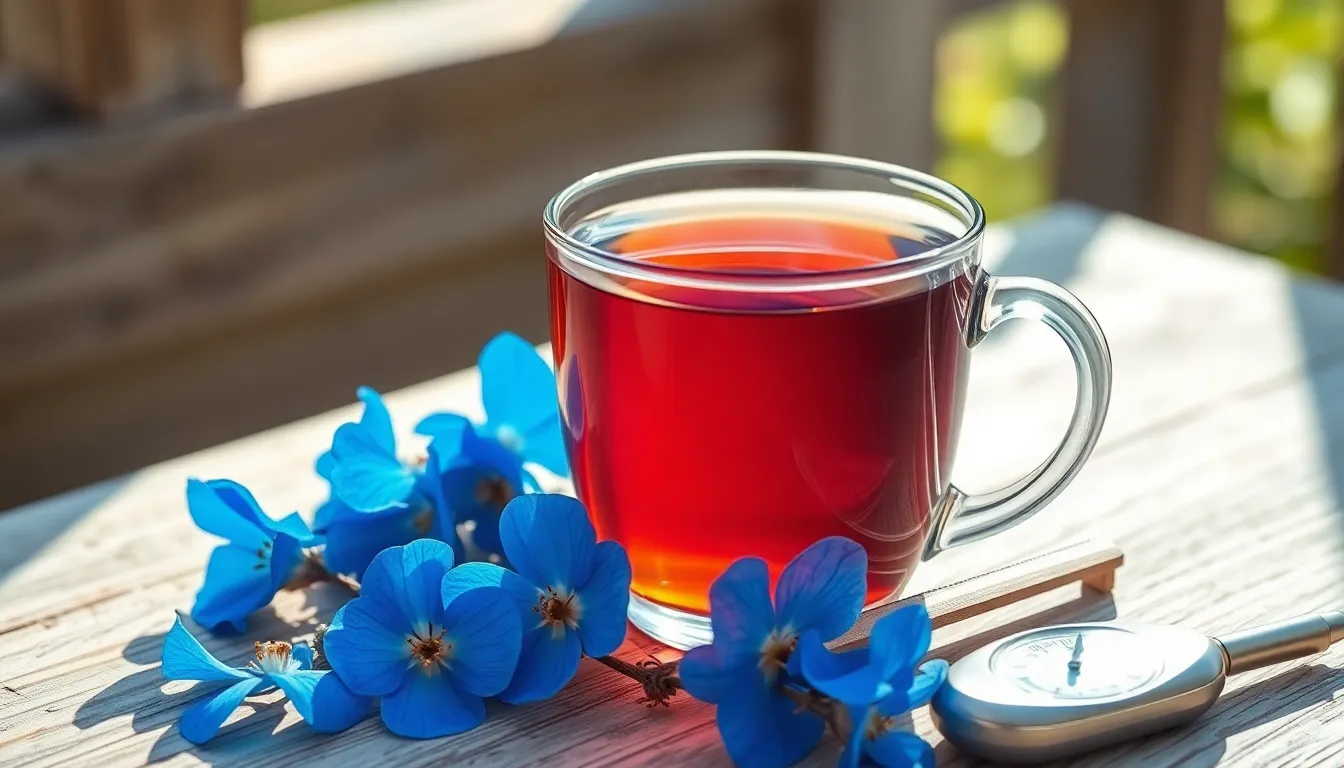
Getting the most out of your butterfly pea tea requires attention to key brewing factors that enhance its natural earthy and woody characteristics. We’ve discovered several techniques that significantly improve both flavor extraction and overall drinking experience.
Water Temperature Guidelines
We recommend heating water to 208°F (98°C) for optimal flavor extraction from butterfly pea flowers. This temperature enhances the tea’s natural flavors while bringing out a more vivid taste profile. Water that’s too hot can lead to unwanted bitterness that masks the delicate floral undertones.
Using a thermometer ensures consistent results, though bringing water to a rolling boil and letting it cool for about 30 seconds typically achieves the ideal temperature. The proper heat level allows the dried flowers to release their earthy compounds without becoming harsh or overpowering.
Steeping Time Recommendations
Steeping duration dramatically affects the final flavor profile of your butterfly pea tea. We suggest experimenting with different timing based on your taste preferences:
| Steeping Time | Flavor Profile | Best For |
|---|---|---|
| 1-3 minutes | Lighter, delicate floral notes | First-time drinkers, subtle taste preference |
| 5-10 minutes | Deeper, pronounced earthy taste | Full-bodied flavor, color intensity |
Shorter steeping times yield a gentler introduction to the tea’s characteristics, while longer steeping develops the more complex woody and vegetal notes. We find that 7 minutes provides an excellent balance between flavor depth and smoothness.
Storage Tips for Optimal Taste
Proper storage preserves both the flavor integrity and vibrant color potential of butterfly pea flowers. We store our dried flowers in airtight containers away from direct sunlight and moisture. Cool, dry locations like pantry shelves maintain the flowers’ natural properties for months.
Glass jars with tight-fitting lids work exceptionally well for preventing air exposure that can diminish flavor quality. We avoid storing the flowers near strong-smelling spices or coffee, as they can absorb other aromas that interfere with their delicate taste profile.
Temperature fluctuations can also affect the flowers’ potency, so we keep them in consistently cool environments rather than areas that experience frequent temperature changes.
Make-Ahead Instructions
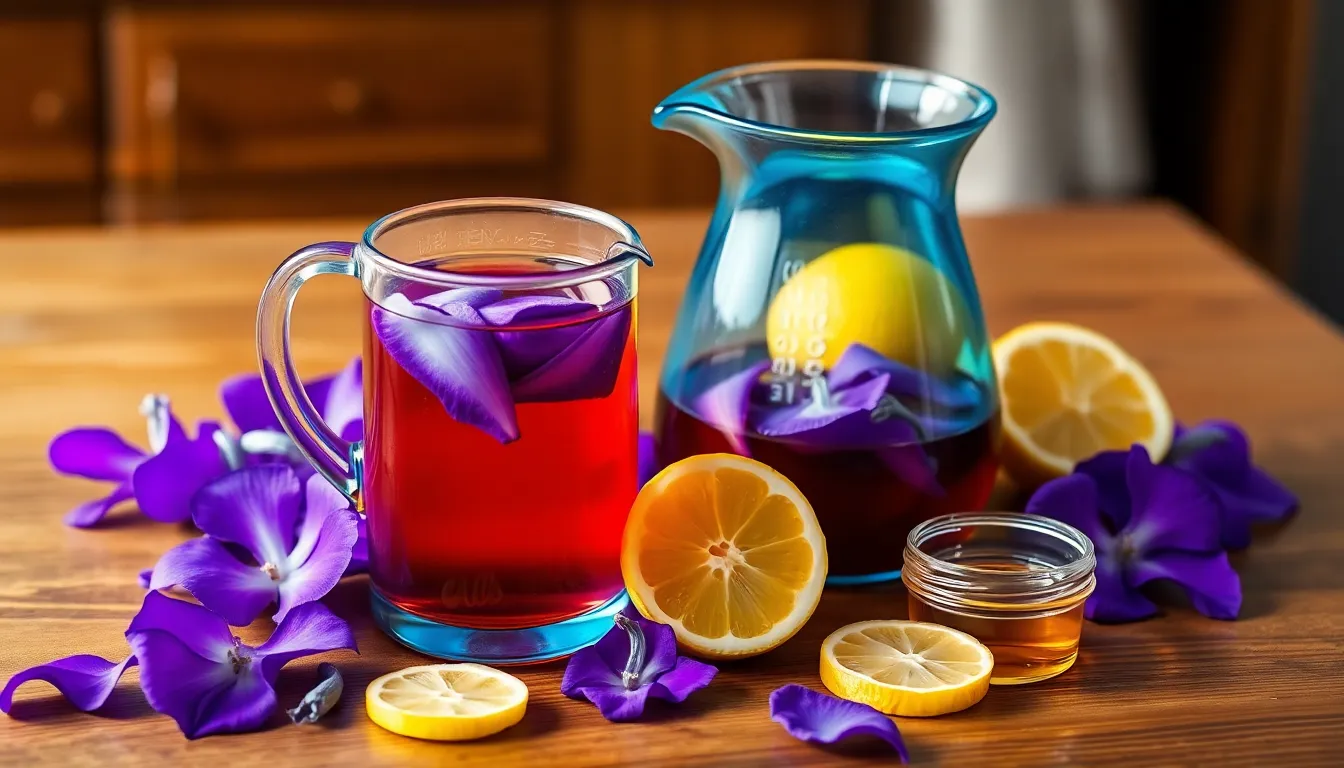
We can prepare butterfly pea tea in advance to enjoy its mild, earthy flavor and stunning visual appeal throughout the week. The naturally caffeine-free nature of this herbal tea makes it perfect for batch preparation and storage.
Cold Brew Concentrate Method
We recommend creating a cold brew concentrate by soaking 1/4 cup of dried butterfly pea flowers in 4 cups of cold filtered water overnight for 8-12 hours. This gentle extraction method produces a smooth, refreshing tea with enhanced floral undertones compared to hot brewing. The extended steeping time allows the earthy and woody characteristics to develop fully while maintaining the tea’s delicate flavor profile.
Hot Brew Storage Preparation
For hot tea preparation, we can brew large batches using our standard method of steeping dried flowers in water heated to 208°F (97°C) for 5-10 minutes. After straining, the prepared tea maintains its vibrant blue color and subtle vegetal notes when stored properly in the refrigerator for up to 5 days.
Storage Guidelines
| Storage Method | Duration | Temperature | Container Type |
|---|---|---|---|
| Refrigerated liquid tea | 5 days | 35-40°F | Glass pitcher or jar |
| Cold brew concentrate | 7 days | 35-40°F | Airtight glass container |
| Frozen tea cubes | 3 months | 0°F | Ice cube trays |
Flavor Enhancement Preparation
We can pre-mix flavor additions to save time during serving. Simple syrup infused with honey combines beautifully with the tea’s mild taste, while pre-squeezed lemon juice in small containers allows for immediate color transformation from blue to purple when guests desire the visual spectacle.
Serving Preparation Tips
Glass containers preserve both the tea’s delicate flavor and its signature color-changing properties when acidic elements are added. We store the prepared tea away from direct sunlight to maintain the vibrant blue hue that makes this beverage so visually appealing. The tea’s neutral flavor base remains stable during storage, making it ideal for adding to smoothies, desserts, or specialty drinks throughout the week.
Conclusion
We’ve discovered that butterfly pea tea offers a surprisingly gentle drinking experience that’s perfect for tea newcomers and seasoned enthusiasts alike. Its mild earthy flavor with subtle floral notes creates a soothing beverage that won’t overwhelm your palate.
The tea’s true magic lies in its versatility – whether you’re sipping it plain to appreciate its natural characteristics or transforming it with citrus for a colorful twist. Its caffeine-free nature means we can enjoy this beautiful brew any time of day without worry.
With minimal ingredients and simple brewing techniques butterfly pea tea proves that creating something extraordinary doesn’t require complexity. We encourage you to experiment with different enhancements and temperatures to find your perfect cup of this visually stunning and deliciously subtle tea.
Frequently Asked Questions
What does butterfly pea tea taste like?
Butterfly pea tea has a mild, earthy flavor with subtle grassy and floral notes. It’s much gentler than green tea, offering a smooth and calming drinking experience. The taste is delicate with hints of cucumber and green bean, creating a clean vegetal quality. Its neutral flavor profile makes it very accessible for those who find other herbal teas too strong or bitter.
Why does butterfly pea tea change color?
Butterfly pea tea changes color due to its pH-sensitive anthocyanins. When you add acidic ingredients like lemon juice, the blue tea transforms to purple or pink. This color change is purely natural and doesn’t affect the tea’s safety. The transformation also enhances the flavor by adding bright, tart notes that complement the tea’s natural earthiness.
Is butterfly pea tea caffeinated?
No, butterfly pea tea is completely caffeine-free. This makes it perfect for drinking at any time of day, including evenings, without affecting your sleep. The absence of caffeine contributes to its smooth, calming drinking experience and allows you to enjoy multiple cups throughout the day without stimulant effects.
How do you brew butterfly pea tea?
To brew butterfly pea tea, heat water to 208°F (97°C) and steep 1-2 teaspoons of dried butterfly pea flowers for 5-10 minutes. Use a fine mesh strainer or tea infuser, and serve in clear cups to showcase the beautiful blue color. The longer steeping time allows for optimal extraction of both flavor and the characteristic blue hue.
Can you drink butterfly pea tea cold?
Yes, butterfly pea tea is excellent both hot and cold. Cold brewing creates a smoother, more refreshing taste while maintaining the vibrant blue color. You can make it as iced tea or cold brew concentrate. The flavor profile remains consistent, though cold preparation tends to be milder and more refreshing than hot brewing.
What can you add to butterfly pea tea for flavor?
You can enhance butterfly pea tea with honey, agave nectar, or simple syrup for sweetness. Lemon juice adds tartness and creates a stunning color change. Other herbs like lemongrass, mint, and ginger blend well for complex flavors. The tea’s neutral base makes it versatile for various flavor combinations and creative preparations.
How long does brewed butterfly pea tea last?
Freshly brewed hot butterfly pea tea can be stored in the refrigerator for 3-5 days in glass containers. Cold brew concentrate lasts up to one week when properly stored. Always use airtight glass containers to preserve flavor and color. The tea’s caffeine-free nature makes it ideal for batch preparation and make-ahead brewing.
Where can you buy butterfly pea flowers?
Dried butterfly pea flowers are available at health food stores, specialty tea shops, Asian grocery stores, and online retailers. Look for high-quality flowers that retain their deep blue color and aromatic properties. Proper sourcing ensures the best flavor and the most vibrant color transformation when brewing your tea.

